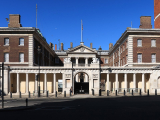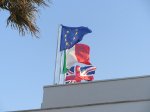Media
-
 Donald Trump sues BBC for £7.5bn over edited January 6 speech
Donald Trump has launched a £7.5 billion lawsuit against the BBC, accusing the public broadcaster of defamation and deceptive editing in a documentary examining the January 6, 2021, attack16 December 2025Read More...
Donald Trump sues BBC for £7.5bn over edited January 6 speech
Donald Trump has launched a £7.5 billion lawsuit against the BBC, accusing the public broadcaster of defamation and deceptive editing in a documentary examining the January 6, 2021, attack16 December 2025Read More... -
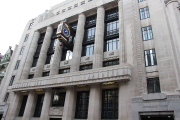 Daily Mail owner agrees £500m deal to acquire Telegraph titles
The publisher of the Daily Mail has struck a £500 million agreement to buy the Telegraph newspapers, bringing an end to months of uncertainty over the titles’ future ownership.22 November 2025Read More...
Daily Mail owner agrees £500m deal to acquire Telegraph titles
The publisher of the Daily Mail has struck a £500 million agreement to buy the Telegraph newspapers, bringing an end to months of uncertainty over the titles’ future ownership.22 November 2025Read More... -
 BBC reports £1.1bn loss as licence fee income falls amid viewer exodus
The BBC has recorded a £1.1 billion loss as growing numbers of viewers either cancel or fail to pay the TV licence fee, according to a new parliamentary report.21 November 2025Read More...
BBC reports £1.1bn loss as licence fee income falls amid viewer exodus
The BBC has recorded a £1.1 billion loss as growing numbers of viewers either cancel or fail to pay the TV licence fee, according to a new parliamentary report.21 November 2025Read More... -
 Trump says he still plans to sue BBC, despite its apology
Donald Trump says he’s moving forward with legal action against the BBC next week, even though the broadcaster has already apologised for misleadingly editing one of his speeches.15 November 2025Read More...
Trump says he still plans to sue BBC, despite its apology
Donald Trump says he’s moving forward with legal action against the BBC next week, even though the broadcaster has already apologised for misleadingly editing one of his speeches.15 November 2025Read More... -
 BBC apologises to Trump for edited Panorama clip — but says it won’t pay damages
The BBC has apologised to US President Donald Trump after a Panorama episode stitched together parts of his 6 January 2021 speech in a way that could imply he was directly calling for14 November 2025Read More...
BBC apologises to Trump for edited Panorama clip — but says it won’t pay damages
The BBC has apologised to US President Donald Trump after a Panorama episode stitched together parts of his 6 January 2021 speech in a way that could imply he was directly calling for14 November 2025Read More...

Culture
-
 IWM Duxford to open new Second World War rooms revealing unseen artefacts and daily life of wartime pilots
IWM Duxford is set to open three newly restored Second World War spaces, offering visitors an intimate look at the lives of aircrew stationed at the Cambridgeshire airfield during the conflict.Read More...
IWM Duxford to open new Second World War rooms revealing unseen artefacts and daily life of wartime pilots
IWM Duxford is set to open three newly restored Second World War spaces, offering visitors an intimate look at the lives of aircrew stationed at the Cambridgeshire airfield during the conflict.Read More... -
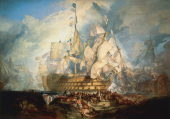 War-torn Trafalgar Union Flag faces possible departure from UK
A rare Union Flag that led the British charge at the Battle of Trafalgar has been placed under an export bar, giving UK institutions the chance to keep the historic relic in the country.Read More...
War-torn Trafalgar Union Flag faces possible departure from UK
A rare Union Flag that led the British charge at the Battle of Trafalgar has been placed under an export bar, giving UK institutions the chance to keep the historic relic in the country.Read More... -
 Barbican to host Liam Young’s first UK solo exhibition in 2026
The Barbican has announced ‘In Other Worlds’, the first UK solo exhibition by artist, director and BAFTA-nominated producer Liam Young. Opening May 2026, the immersive show will exploreRead More...
Barbican to host Liam Young’s first UK solo exhibition in 2026
The Barbican has announced ‘In Other Worlds’, the first UK solo exhibition by artist, director and BAFTA-nominated producer Liam Young. Opening May 2026, the immersive show will exploreRead More... -
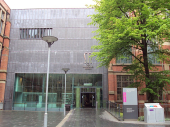 The Manchester Museum displays thousands of African artefacts it knows little about
A museum in northwest England has unveiled a new gallery showcasing thousands of African artefacts, many of which the institution admits it knows very little about. The exhibition aims toRead More...
The Manchester Museum displays thousands of African artefacts it knows little about
A museum in northwest England has unveiled a new gallery showcasing thousands of African artefacts, many of which the institution admits it knows very little about. The exhibition aims toRead More... -
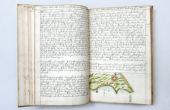 Captain John Narbrough’s journal faces export ban amid fears it could leave the UK
A rare 17th-century manuscript journal documenting Captain John Narbrough’s secret expedition to Spanish America and the Pacific has been placed under a temporary export ban, giving UKRead More...
Captain John Narbrough’s journal faces export ban amid fears it could leave the UK
A rare 17th-century manuscript journal documenting Captain John Narbrough’s secret expedition to Spanish America and the Pacific has been placed under a temporary export ban, giving UKRead More... -
 Earliest evidence of human fire-making unearthed in Suffolk
A team led by the British Museum has uncovered what is now the earliest known evidence of humans deliberately making fire—dating back around 400,000 years—at a site in Barnham,Read More...
Earliest evidence of human fire-making unearthed in Suffolk
A team led by the British Museum has uncovered what is now the earliest known evidence of humans deliberately making fire—dating back around 400,000 years—at a site in Barnham,Read More... -
 Rothschild 15th-century prayer book set to fetch up to $7 million at Sotheby’s auction
Ultra-rare 15th-century mahzor features vivid medieval illustrationsRead More...
Rothschild 15th-century prayer book set to fetch up to $7 million at Sotheby’s auction
Ultra-rare 15th-century mahzor features vivid medieval illustrationsRead More... -
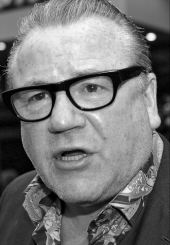 Ray Winstone honoured with Freedom of the City of London
Ray Winstone, one of the UK’s most celebrated ‘hard man’ actors, has been awarded the Freedom of the City of London in recognition of his extensive charitable and fundraising work.Read More...
Ray Winstone honoured with Freedom of the City of London
Ray Winstone, one of the UK’s most celebrated ‘hard man’ actors, has been awarded the Freedom of the City of London in recognition of his extensive charitable and fundraising work.Read More... -
 Golden Globe 2026 nominations announced ahead of January ceremony
The nominations for the 83rd annual Golden Globe Awards were unveiled on Monday, setting the stage for the first major awards ceremony of the season on January 11.Read More...
Golden Globe 2026 nominations announced ahead of January ceremony
The nominations for the 83rd annual Golden Globe Awards were unveiled on Monday, setting the stage for the first major awards ceremony of the season on January 11.Read More... -
 Mayor of London granted right to use historic GLC coat of arms
The Mayor of London has been officially granted permission to use the historic coat of arms once belonging to the former Greater London Council (GLC), following approval from the King.Read More...
Mayor of London granted right to use historic GLC coat of arms
The Mayor of London has been officially granted permission to use the historic coat of arms once belonging to the former Greater London Council (GLC), following approval from the King.Read More... -
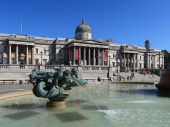 Who will shape the National Gallery’s tomorrow? Architects shortlisted for landmark expansion
The National Gallery has announced a shortlist of six architectural teams competing to design a major new wing as part of its ambitious £750 million Project DomaniRead More...
Who will shape the National Gallery’s tomorrow? Architects shortlisted for landmark expansion
The National Gallery has announced a shortlist of six architectural teams competing to design a major new wing as part of its ambitious £750 million Project DomaniRead More... -
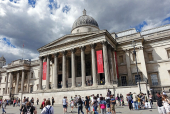 National Gallery unveils ambitious exhibition programme for 2026
The National Gallery has announced a landmark line-up of exhibitions for 2026, spanning five centuries of European art and bringing together rare loans, first-ever UK presentations, and iconicRead More...
National Gallery unveils ambitious exhibition programme for 2026
The National Gallery has announced a landmark line-up of exhibitions for 2026, spanning five centuries of European art and bringing together rare loans, first-ever UK presentations, and iconicRead More...

British Queen celebrates
Most Read
- Teen held after US woman killed in London stabbings
- Heave-ho Harry! Prince prepares to join the walking wounded in ice trek to North Pole
- Football: Farhad Moshiri adamant Everton deal above board
- "Master of English Style". Interview with Designer Lydia Dart
- Letter to the Financial Times from Lord Mayor Alderman Michael Bear
Culture

British singer-songwriter Ed Sheeran has married his girlfriend Cherry Seaborn in a "tiny winter wedding", The Sun newspaper reported on Thursday.

Alex Honnold, a big wall climber who has conquered a series of intimidating rock faces on his own and almost without equipment, could on Sunday add the Oscars to his conquests for his

The Eiffel Tower plans to test a new access policy for visitors after management reached a deal to end a strike by workers complaining of "monstrous" waits at the Paris landmark.

Mercurial snooker legend Ronnie 'Rocket' O'Sullivan hinted on Saturday (Dec 30) he could eschew the chance of a sixth world title, describing the tournament as his least favourite.

British police are investigating Hollywood star Kevin Spacey over a second allegation of sexual assault, the Press Association news agency reported on Wednesday.

The remains of five archbishops of Canterbury have been accidentally discovered by builders in a hidden tomb beneath a London church, site developers said yesterday.
Some 20 lead coffins were discovered in a crypt underneath St Mary’s-at-Lambeth, which sits outside Lambeth Palace, the central London residence of the archbishop of Canterbury — the highest cleric in England.
Two have been identified from name plates, while records show that five were buried in the crypt.
Of the two identified archbishops, one is Richard Bancroft, who was in office from 1604 to 1610 and who oversaw the production of the King James Bible, considered a definitive work of the English language.
Several hundred coffins were cleared out of the church for extensive renovation works in 1850s, during which the vaults were filled in with earth.
But builders accidentally discovered one crypt had been left untouched.

The first major retrospective of gay British art opens this week at the Tate Britain gallery in London, featuring a portrait of Oscar Wilde next to his prison cell door.
"Queer British Art 1861-1967" marks the 50th anniversary of the decriminalisation of male homosexuality in England and looks at the century leading up to the point when the death penalty for gay sex was lifted.
Billed as the "first ever exhibition dedicated to queer British art", the retrospective contains an 1881 portrait of Wilde which is being displayed publicly in Britain for the first time.
"It shows him just on the cusp of success as a writer," said curator Clare Barlow.
It stands next to the cream-coloured wooden door of his cell at Reading Gaol, where he was imprisoned after being sentenced to two years' hard labour for homosexual offences in 1895.
"There's a real emotional punch in this pairing," Barlow said.

The British fashion industry kicked off its seasonal showcase Friday urging the government not to damage a thriving sector by cutting immigration and trade ties with the EU after Brexit.
"Fashion week is a really great time to understand the power and influence of our industry, as well as our creativity," said Caroline Rush, chief executive of the British Fashion Council (BFC).
"We hope that you'll listen as we talk to you about visas, about talent, about tariffs, about frictionless borders, and around IP (intellectual property).
"Because this is incredibly important to sustain this incredible industry, that contributes £28 billion (32.7 billion euros, $34.8 billion) to the British economy and provides 880,000 jobs."

British conductor Simon Rattle on Tuesday called for a new concert hall in London to make the city more competitive on the international music scene, as he takes up his baton at the London Symphony Orchestra.
He threw his weight behind a £280 million (324 million euro, $347 million) project aimed at creating a "Centre for Music" equipped for the digital era.
The plans involve building a new hall on the site of the Museum of London, which is relocating nearby, which would become the new home of the LSO.
Rattle, 61, will head the LSO from September while also conducting his final season at the Berlin Philharmonic until 2018.

London's Science Museum called upon the genius of late architect Zaha Hadid for the “huge challenge” of bringing life to its new gallery dedicated to mathematics, which opens on Thursday.
The Winton Gallery highlights the importance of mathematics through 120 objects, including a cash dispenser, the Enigma encryption machine, a model of a supertanker, a revolutionary aircraft and a 19th-century instrument for measuring tides.
Located in a regenerated old wing of the famous museum, the gallery was co-designed by celebrated Iraqi-British architect Hadid, who died of a heart attack in Miami in March before the gallery’s completion.













